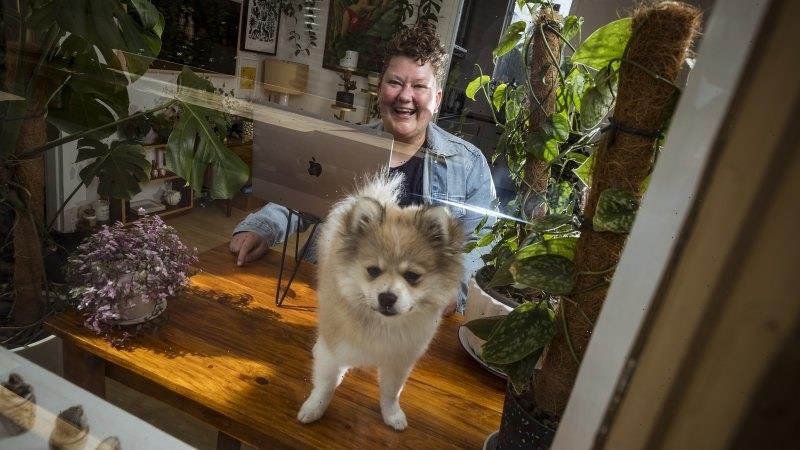Stars Matthew Rhys and John Lithgow, along with cinematographer David Franco and production designer John P. Goldsmith, joined Deadline to talk all things Perry Mason during the HBO panel at Contenders Television: The Nominees awards-season event.
The show was originally intended as a limited series but instead proved so popular HBO has made it a regular series that is already renewed for a second season. It is competing in the Drama categories for Emmys and certainly presents a vision of the celebrated Erle Stanley Gardner creation that really has not been seen before, beginning with an origin story set in 1930s Los Angeles that in some ways is akin to hardboiled film noir tales more familiar to fans of Humphrey Bogart films than the infamous Raymond Burr TV series of the ’50s and ’60s.
That is actually what intrigued Rhys, who plays the title role and is Emmy nominated for Lead Actor in a Drama Series.
Watch on Deadline
“It certainly was a great attraction, you know, it was an enormous incentive to me personally when I first read that first draft, there was a Chandleresque, a Raymond Chandler strong taste to this whole piece, which drew me enormously as a young boy growing up with all those great Humphrey Bogart and James Cagney movies,” he said. “They went back to the origin stories, which were the ’30s, and rightly so because it was so incredibly rich. So for me to fulfill, to live out some real boyhood ambitions of mine to don a fedora, and light a cigarette, and give a quippy one liner as I walked away were many dreams come true.”
For 13-time Emmy nominee and six-time winner Lithgow, the challenge of taking on the role of personal attorney and Mason mentor Elias Birchard “E.B.” Jonathan was irresistible, even if the role only appears in the first four episodes and was not a character created in the original novels or previous TV series. Nevertheless, he is once again nominated as Supporting Actor in a Drama Series.
“Yes, my agent told me it was only four episodes, the first four episodes, in an eight-episode season, and he had not read it yet, so nobody knew why I exited including me, and it was a particular kind of suspense wondering, wait a minute, ‘How come I exit so soon’?” he said. “This is what’s so great about the role. My departure is very surprising, but when it happens — and I won’t say exactly how I leave the series, no matter how many people already know it — it immediately makes people look back on the preceding four episodes and pick out all the little clues that they should have noticed that led to his demise because demise it is. How’s that for coy?”
The possibilities for a rich visual look in re-creating the Great Depression in L.A. were met with enthusiasm by the crafts team brought on to create this world of Mason’s early career, when he was a P.I. before becoming a lawyer halfway through the season. For Franco, nominated for Cinematography for a Drama Series, the big question was in shooting a Los Angeles that no longer looks as it did then.
“The biggest challenge already from the start is how you re-create Los Angeles of the time that doesn’t exist anymore, so I remember one of the first time we walked downtown with everybody, and I was completely at a loss and scratching my head. I say, ‘Yeah, we can shoot that little corner of the top building and that little corner of the thing, it was like I was like out of breath, I mean, because I did the same period with Boardwalk Empire in New York, but in New York, you can grab yourself a little bit better, I would say, so but somehow, we managed,“ he said. “I just still can’t believe we managed to extract as much as we can of what’s left of downtown Los Angeles, so that was the challenge and the hard part. The rest, you know, when you build and with somebody like John, you build from scratch, it’s very easy to make it look amazing.”
The “John” he is referring to is Goldsmith, scoring his first-ever Emmy nomination for the task of production design in a show that requires going back in time some 85 years ago.
“I think one of our conversations revolved around this idea that we didn’t want to showcase what had already been showcased, the iconic landmarks of Los Angeles. We were really interested in what was more typical, and we used some historical resources like this book that was published from Archived LAPD crime scenes, which showed from the period actual interiors and exteriors that helped us immensely get a sense of the kind of spareness of a lot of these places, and in this period, a way that people cobbled their lives together, there’s an industriousness and a resourcefulness, and we wanted to express that,” he explained. “At the same time, the director really continued to drive forward this idea that we are a world in transition, and Perry Mason is someone whose feet are in two worlds, the way that the world has been but then this idea that modernity is approaching, and it’s coming on fast, so the places that we got to design, like the courtroom from scratch, we sort of layered traditionally. It had to exist inside City Hall, it had to feel like it fit there, but we also wanted it to have a spirit of modernity, that there was a kind of streamlined, not quite art deco, but that kind of flavor about it so that this idea of a world in transition could be made clear visually.”
Check back Monday for the panel video.
Read More About:
Source: Read Full Article


